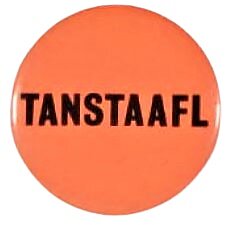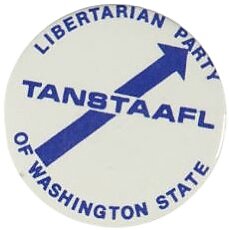By now, those following the collapse of Silicon Valley Bank (SVB) have largely identified their preferred culprits for the second-largest bank failure in U.S. history. But regardless of where one assigns the most blame, it’s clear that the post-Global Financial Crisis regulatory regime neither prevented SVB’s demise nor an extraordinary federal reaction to it. While some take the fall of SVB as a reason to double down on the usual medicine, this bank failure is a case in point for allowing progress in monetary and financial alternatives.
Ultimately, SVB failed to manage risks, some of which it took on strategically, others of which caught it flatfooted—and all of which observers should consider as potentially enabled by the overhang of moral hazard from previous bank bailouts. Prominent among these risks was acute interest rate exposure through both SVB’s depositors and its investments.
SVB specialized in catering to a relatively undiversified depositor base concentrated among tech startups. Startups are a sine qua non of technological innovation and economic dynamism. As venture-funded bets that are typically long term, taking time to achieve profitability, startups also tend to be sensitive to interest rate hikes. In addition, when rates were low and SVB’s depositors were flush with cash, the bank invested heavily in long-dated securities, which also would decline in market value in the event of rising interest rates.
As interest rates rose, SVB was caught between a rock and a hard place. A vicious cycle kicked off, with deposit drawdowns leading SVB to sell investments at a loss to raise cash and those balance sheet losses eroding confidence. Notably, depositors in the startup space are tightly networked—i.e., they talk (not to mention tweet)—and a “bad-news run” on SVB followed.
The failure of a bank serving such a critical sector as the tech startup ecosystem has led many to question the health of our monetary and financial status quo. One lesson of SVB is we should let markets develop more new financial tools and institutions, not fewer of them. Not every innovation may be right for every business, but policymakers should treat private alternatives to our legacy system as rational responses to manifest flaws and unmet needs, not incipient threats to an already-perfected order.
New technologies can enhance, unbundle, and repackage bank services, efficiently reorganizing risks and capabilities as best suits users. In the fraught weekend following SVB’s takeover by the FDIC, many questioned how a corporate treasury could mitigate bank run risk going forward. Financial technology already is enabling new capabilities for businesses to manage their war chests, including by more seamlessly integrating multiple accounts and account types—a resiliency feature brought into focus by FDIC insurance “limits” in recent days.
SVB’s failure not only jeopardized the security of corporate funds but also companies’ ability to move money over its payment rails. Here too, financial technology has offered an improvement over the status quo. Blockchain-based stablecoins do not rely on legacy payment rails maintained and gated by centralized intermediaries like SVB to move tokens from one user to another. For example, a company with stablecoin reserves held in a self-custody wallet could both access and transfer tokens permissionlessly and on demand. As fears over SVB depositors’ ability to make payroll this week indicated, having resilient payment capabilities is a serious matter.
Like all solutions, stablecoins are not perfect or risk free. Although an intermediary may not be necessary to move stablecoin tokens between users, collateralized stablecoins do require some degree of intermediation of the on/off ramps that convert tokens to fiat currency and vice versa. For that reason, SVB’s failure led to a de-pegging of the asset-backed stablecoin USDC—which held some of its reserves at SVB and temporarily declined in market value from $1.00 to, at one point, $0.88 per 1 USDC over the weekend.
While trustworthy reserves clearly are essential to an asset-backed stablecoin, it was SVB that failed USDC, not vice versa. There’s no reason in principle stablecoin reserve assets must be held at a commercial bank operating on a fractional reserve model (though they can be if that’s the preference of the stablecoin’s users). Instead of bank deposits at a lending institution, stablecoin reserves can be backed by short-duration securities held by a limited purpose investment company or other vehicle, as my colleagues Norbert Michel and Jennifer Schulp explain. In fact, the failure of SVB gave the lie to the idea that, as the President’s Working Group proposed, a sound stablecoin can only be one involving an insured depository institution.
Among the ways to achieve a more resilient corporate treasury, the idea of “narrow banking” also gained attention in the wake of SVB’s failure. Narrow banking, as my colleague George Selgin explains, is a “widely discussed if seldom put into practice” alternative to banking with insured depositories that involves fully backing deposits with cash reserves (e.g., Federal Reserve notes or balances in a Fed master account). As Selgin further explains, uninsured “narrow stablecoins”—private stablecoins backed with wholesale Fed account balances and, potentially, certain U.S. Treasuries—should be one more addition to the payment ecosystem, among others, providing competition not only to enhance the payment system with better-priced and better-quality services, but also to improve financial inclusion.
Banks’ ability to extend credit, pay interest on deposits, and facilitate payments have made them one of the most important technologies for economic growth in history. Nonetheless, as the failure of SVB makes clear, the current system of regulated banks is far from one that cannot be improved upon. New technologies are enabling new suites of tools that can be alternatives, as well as improvements, to bank services. There’s no such thing as a free lunch, but more diverse products can allow businesses to make more efficient risk-based tradeoffs. They and their consumers, not policymakers or pundits, should get to decide what these tradeoffs and tools look like.

